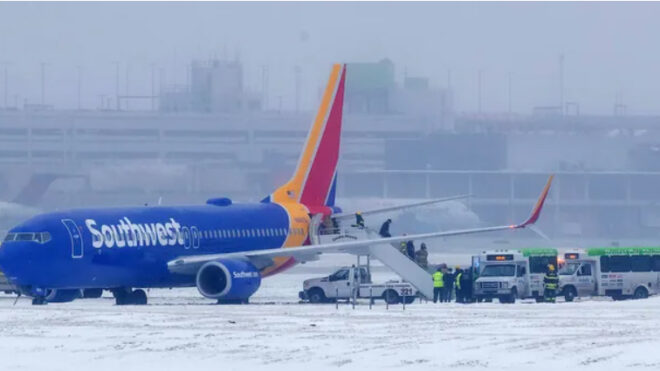Who hasn’t heard that Southwest Airlines has been known as one of the best airlines – indeed one of the best companies of any kind – to work for in the US? Bill Catlette and I have written and spoken extensively about them, and with good reason. The culture and workplace practices instituted by this moldbreaking airline’s early leaders, and largely continued by succeeding generations, have earned it a five-star reputation as a destination employer. And speaking of earnings, they’ve long been one of the most consistently profitable airlines in aviation history. If you’re familiar with our work, you know that’s not a coincidence.
If only it hadn’t snowed the week of Christmas, 2022.
You know what happened. More than 15,000 flight cancellations. Way more than any other US airline beleaguered by the same weather system. Multiply that by a modest average of 120 passengers per flight, and you’ve got roughly the entire population of Silicon Valley, with its attendant luggage, failing to reach its destination. For the holidays.
It would be easy to pounce on Southwest. The media certainly did. And if I’d had a ticket for one of those flights, I might be inclined to do the same. But as bad an experience as it was for the displaced passengers (and it was), Southwest was surely no great place to work that week.
No, they didn’t cut pay or benefits. Managers didn’t start treating people badly. And the company’s legendary fun culture didn’t suddenly go into a tailspin. This was a failure of tools, of systems. In this case, software applications for which nobody had downloaded an update in… well, more than twenty years. Try using a 20-year-old app on your smartphone.
As bad an experience as it was for the displaced passengers (and it was), Southwest was surely no great place to work that week.
A quick look at Chapter 12 of our book, Contented Cows STILL Give Better Milk, provides some framing:
“All of the policies, methods, systems, habits, and procedures that comprise your organization’s operating environment work together to have a positive or negative impact on your workforce, and its members’ willingness to part with that most precious commodity: their own discretionary effort.
It does no good to hire talented people who fit well within the organization, get them all fired up about the voyage, equip them with a capable leader, train the stew out of them, etc., if one or more forces within your organization’s system are going to prevent them from performing… Most people want to work in an environment where we can do our very best work, and it makes us crazy when dumb leadership actions or systemic obstacles keep that from happening.”
As one Southwest pilot put it, “The frontline employees were ready and on station. We were properly staffed. We were at the airports. Hell, we were ON the airplanes. But our antiquated software systems failed, coupled with a decades old system of having to manage 20,000 frontline employees by phone calls. No automation had been developed to run this sophisticated machine.”
Failure to provide the right tools landed smack in the laps of Southwest’s customers and employees. Its shareholders will be next to feel the pain.
As a debacle is a terrible thing to waste, let’s see what we more earthbound organizations can learn from Southwest and their terrible, horrible, very bad, no good week.
- First, ask, “Do our people have the tools they need to do their very best work?” This includes equipment, software, hardware, implements, furniture, technology, physical environment, and all of the other tangible items that enable them to serve customers, internal and external. If not, why not? We suggest doing an inventory and analysis, before it’s too late – and then where there are shortcomings, figure out what has to be done, by whom, and by when. Apparently Southwest talked about these problems for years. We all see where that got them.
- Do they have the systems, procedures, policies, knowledge, and training to execute your mission? Or are those things (or their lack) standing in their way? The business world is replete with examples of stupid ways of doing things that are a total pain in the backside for your customers AND your employees. Fix that stuff! It’s costing you money, customers, and talented workers who have options and won’t put up with it.
- If you don’t know how to answer the above questions, go ask your people! This is something else that Southwest reportedly failed to do in the last decades. Do this in two ways: 1. Get your leaders out in the field to actually talk with people. This simple but powerful activity has fallen even more by the wayside with the growth of the remote and hybrid workplace. That’s no excuse. And 2. Get into the habit of conducting employee research by way of a regular, ongoing process of employee surveys. We’re really good at this, and we can help you.
The late, great Peter Drucker hit the nail on the head: “Ninety percent of what we call management consists of making it difficult for people to get things done.”
Don’t let that be you. Provide the means, tools, and systems to make it easy for people to delight (not delay) your customers. That’ll always find its way to your bottom line.
book richard or bill to speak for your meeting


